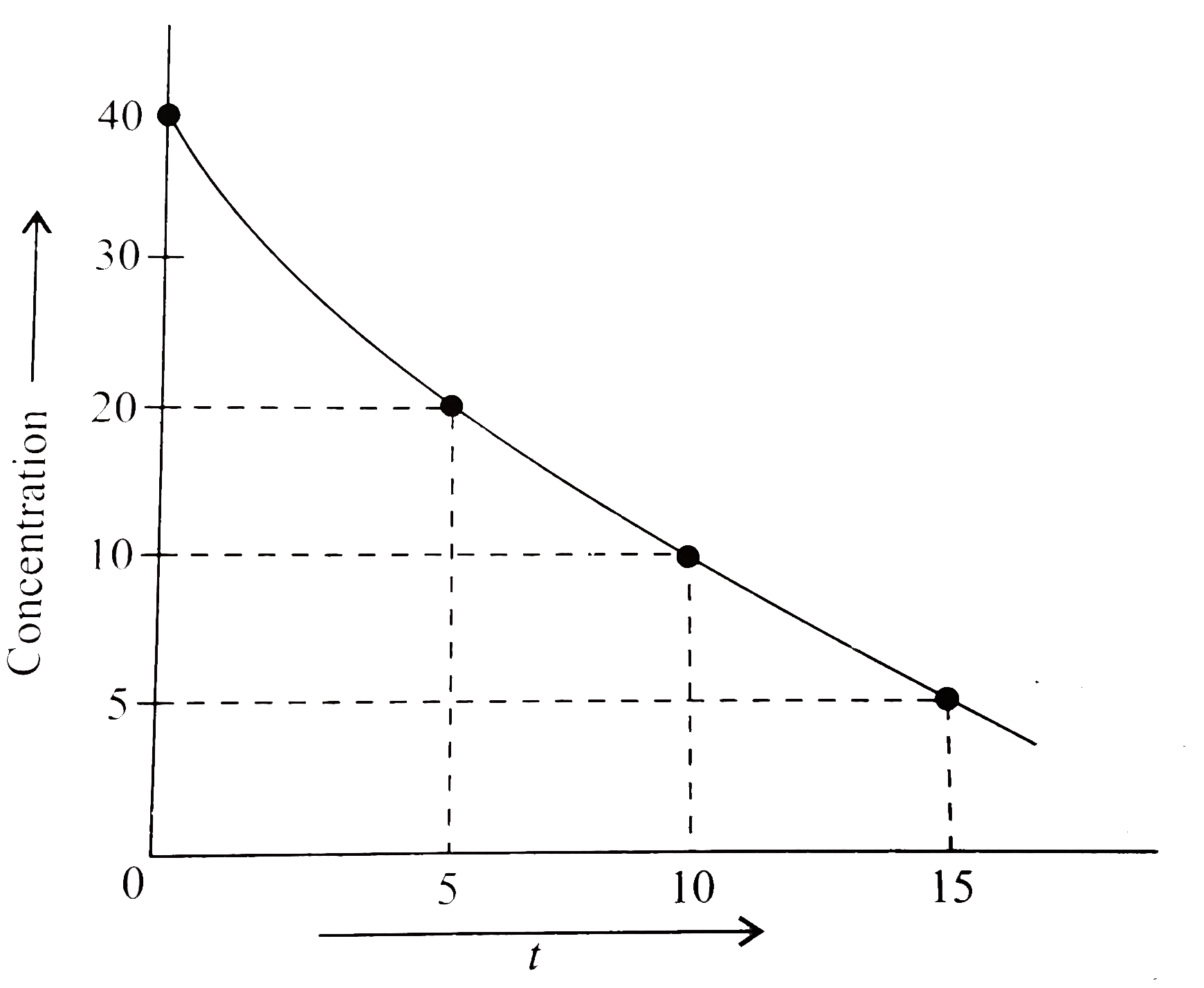For a reaction , a graph was plotted between reactant concentration c and time as shown in the figure below.

Identify the order of the reaction with respect to the reactant. Can the concentration of the reactant be theoretically zero after infinite time?
form graph, it is evident that
a. Concentration of 40 reduced to 20 in 5min.
b. 20 reduced to 10 in 5min.
c. 10 reduces to 5 in 5min.
i.e., half is independent of concentration which is characteristic of first order. In first order, the concentration of the reactant can never be the theoretically zero.
Topper's Solved these Questions
- CHEMICAL KINETICSBOOK - CENGAGE CHEMISTRY ENGLISHCHAPTER - CHEMICAL KINETICSEXERCISE - Solved Example
52 Videos
- CHEMICAL KINETICSBOOK - CENGAGE CHEMISTRY ENGLISHCHAPTER - CHEMICAL KINETICSEXERCISE - Ex 4.1 (Objective)
9 Videos
- CARBOXYLIC ACIDS AND THEIR DERIVATIVESBOOK - CENGAGE CHEMISTRY ENGLISHCHAPTER - CARBOXYLIC ACIDS AND THEIR DERIVATIVESEXERCISE - Exercises Archives (Analytical And Descriptive)
34 Videos
- COORDINATION COMPOUNDSBOOK - CENGAGE CHEMISTRY ENGLISHCHAPTER - COORDINATION COMPOUNDSEXERCISE - Archives Subjective
18 Videos
Similar Questions
For a first order reaction, the rate of the reaction doubled as the concentration of the reactant is doubled.
View SolutionThe rate constant of any reaction is proportional to the concentration of the reactants.
View SolutionThe rate constant of any reaction is proportional to the concentration of the reactants.
View SolutionThe rate constant of any reaction is proportional to the concentration of the reactants.
View SolutionThe rate constant of a specific reaction is independent of the concentration of the reactants.
View SolutionThe rate constant of a first order reaction is proportional to the concentration of the reactant.
View SolutionThe rate constant of a first order reaction is proportional to the concentration of the reactant.
View SolutionThe rate constant of a first order reaction is proportional to the concentration of the reactant.
View SolutionAn increse in the concentration of the reactants of a reaction leads to change in:
View SolutionIn a reaction A→B the rate of reaction increases two times on increasing the concentration of the reactant four times, then order of reaction is
View Solution
